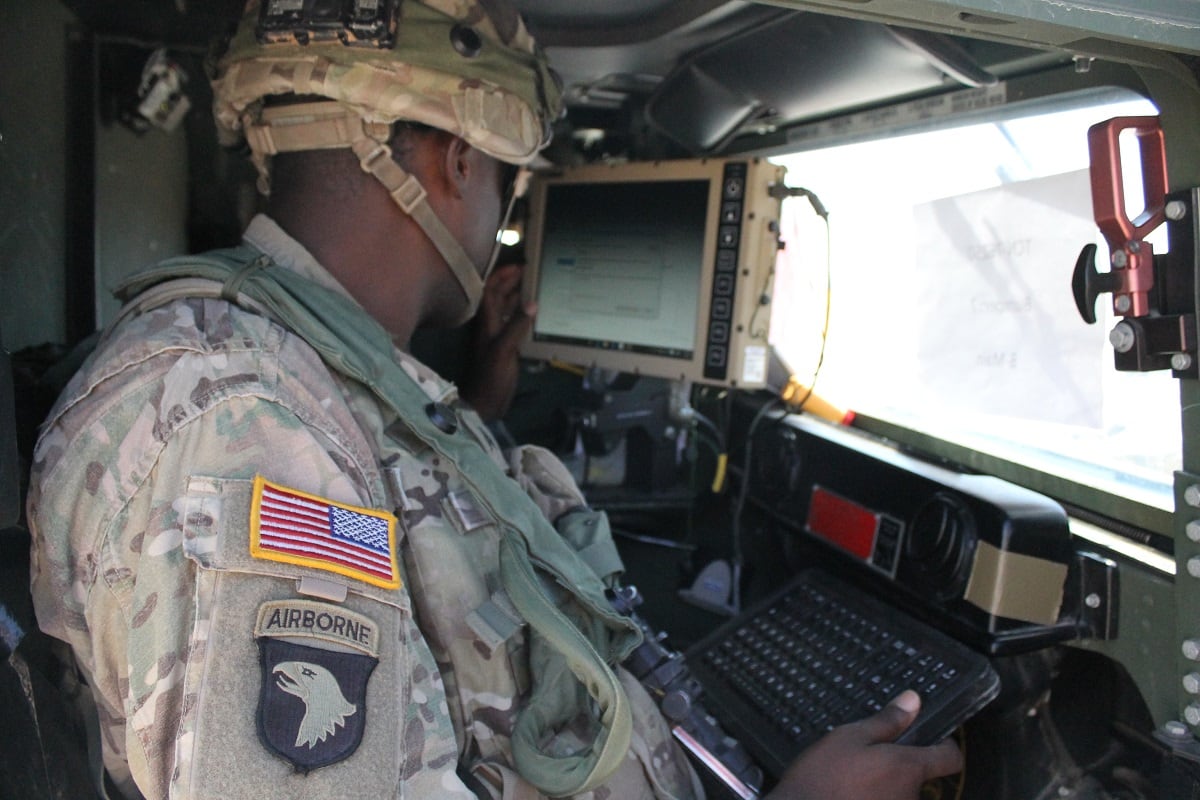WASHINGTON — The Army may be curbing the larger version of its Warfighter Information Network-Tactical, but a smaller, lighter version lives on and the service is equipping a brigade with plans to continue fielding to priority light infantry units over the next several years, according to an Army spokesman.
The first brigade to receive the fielding of both the WIN-T Tactical Communications Node-Lite (TCN-L) and the Network Operations Security Center-Lite (NOSC-L) is the 2nd Brigade Combat Team, 25th Infantry Division at Schofield Barracks, Hawaii, Paul Mehney, a spokesman in the Army’s Program Executive Office Command Control Communications-Tactical, told Defense News.
The unit previously was equipped with the oldest version of the tactical network — WIN-T Increment 1 — which only works at-the-halt. WIN-T Inc. 2 and TCN-L provide on-the-move communications capability.
Elements of the 101st Air Assault Division also have TCN-L and NOSC versions.
The service decided to halt WIN-T Increment 2 procurement as it increasingly contemplated having to fight against peer adversaries, particularly as Russia continues to behave aggressively and unpredictably on the Eastern European flank.
WIN-T Inc. 2 is too heavy, too cumbersome and easily detectable in an electromagnetic spectrum. WIN-T was integrated on 5-ton tactical vehicles, but to make the tactical network more mobile, the Army moved WIN-T onto a Humvee, which can be sling loaded by a CH-47 Chinook cargo helicopter across the battlefield or rolled onto an Air Force C-130 aircraft.
TCN-L provides beyond-line-of-sight and high-bandwidth line-of-sight network communication while moving in a convoy or at the “quick halt” and can also be positioned at the stationary command post. The NOSC monitor allows soldiers to manage and provide enhanced security to the tactical network.
WIN-T TCN-L and NOSC went through an operational test at the Network Integration Evaluation in July 2017 at Fort Bliss, Texas.

The 2nd Brigade Combat Team, 101st Airborne Division from Fort Campbell, Kentucky, conducted the NIE and subsequently the operational tests for the two elements of the Army’s tactical network.
The soldiers’ reviews at the NIE of both TCN-L and NOSC were mostly favorable.
[Rethinking the battlefield: Army drives toward lighter, smaller, mobile systems at NIE]
And the latest Director of Operational Test and Evaluation (DOT&E) report reflects those views.
The Army’s chief weapons tester Robert Behler reported that soldiers using both WIN-T TCN-L and NOSC were able to “plan, install, operate and maintain a WIN-T network under operationally realistic conditions.”
NOSC tools were deemed effective except for the “network operations summary board” which provided delayed network information and “did not support network monitoring,” according to the report. But the system as a whole was otherwise operationally suitable.
The brigade transported the systems by CH-47F in a “realistic tactical environment,” the report states.
The report advocates for better training for both systems and notes that soldiers asked for more in-depth training “to include advanced theory of operations, system operations, troubleshooting and software use.”
WIN-T Increment 2, was deemed survivable in the operational test, according to the report, and was able to stand up against cyberattacks. The system “demonstrated a robust cyber network defense to protect against an operationally realistic cyber threat opposing force,” the report states.
“The virtual firewall and improved software tools were effective,” it reads, adding the program provided one expert field service representative to implement improved cybersecurity.
The report suggests the Army either has to have a field service representative in the field to maintain the improved level of cybersecurity or train a Signal soldier to “accomplish these complex tasks.”
Jen Judson is an award-winning journalist covering land warfare for Defense News. She has also worked for Politico and Inside Defense. She holds a Master of Science degree in journalism from Boston University and a Bachelor of Arts degree from Kenyon College.








